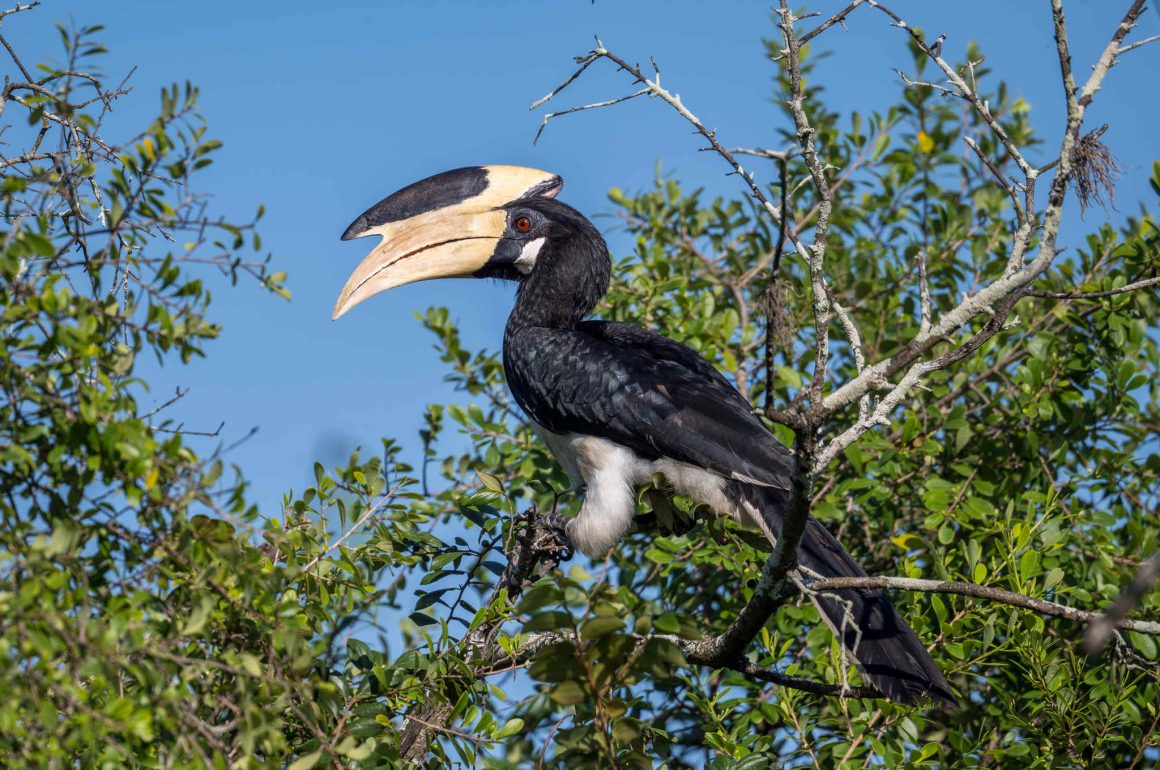
The Malabar Pied Hornbill is a medium-sized hornbill, somewhat larger than the much more common Oriental Pied Hornbill.
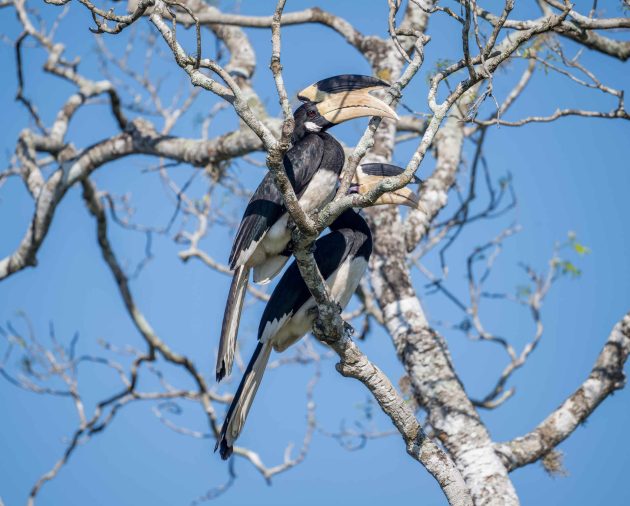
It is distributed in three separate geographic areas, two in India and one in Sri Lanka, where the photos in this post were taken in March 2025.
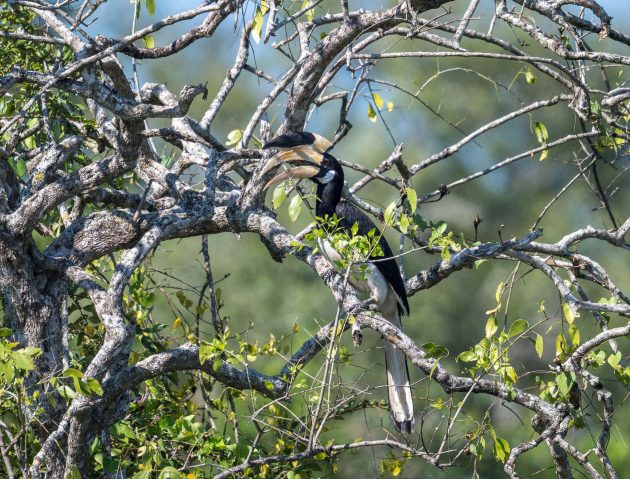
The species is listed as Near Threatened, with the main threats being habitat loss and poaching (in India). However, a change (to Least Concern) has been proposed (source) as the population size is estimated to be above 10,000, and the decline in numbers is less than 20%. Seems a bit careless to find these numbers even vaguely comforting, but then again, there is no point in “focusing on everything” (as a consultant, I sometimes told my clients that if they tell me to focus on two or three things, I will do it. If they tell me to focus on twenty or thirty things, I will just focus on whatever I think is best. End of non-advertisement for my consulting services).
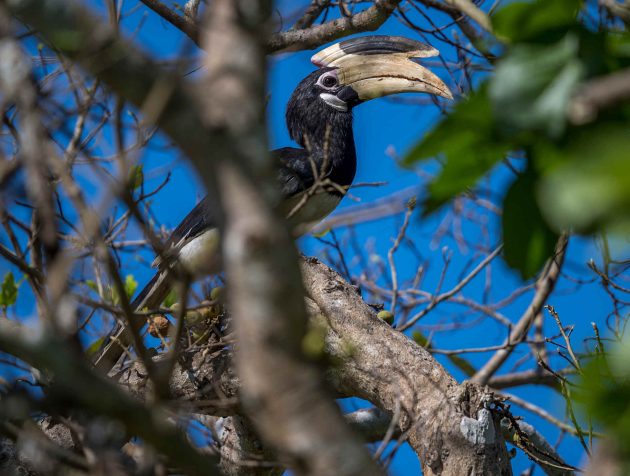
However, one paper reports a drastic decline in one region in India.
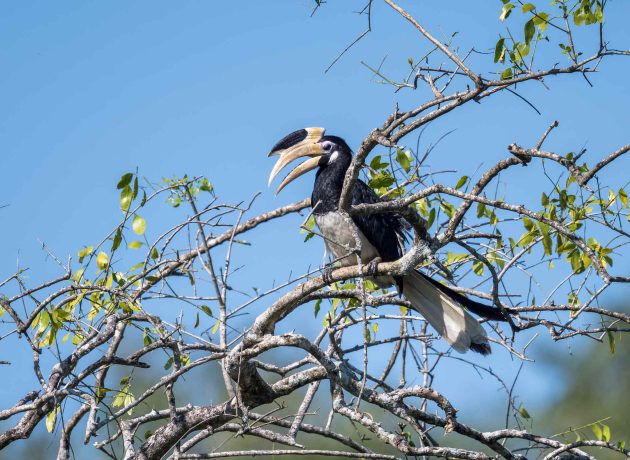
In addition, among all hornbill species, it is particularly threatened by climate change – one paper predicts that its range will contract by 69%.
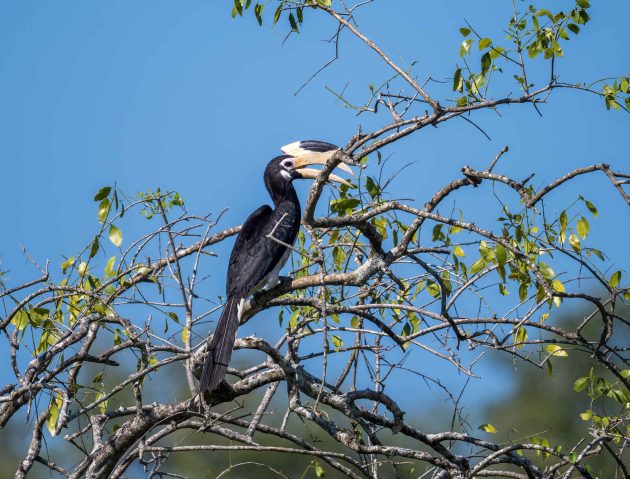
In India, the Tamil Nadu government has therefore launched a hornbill conservation initiative to protect the habitat of four threatened hornbill species in the Western Ghats, with a particular focus on the Malabar Pied Hornbill (source).
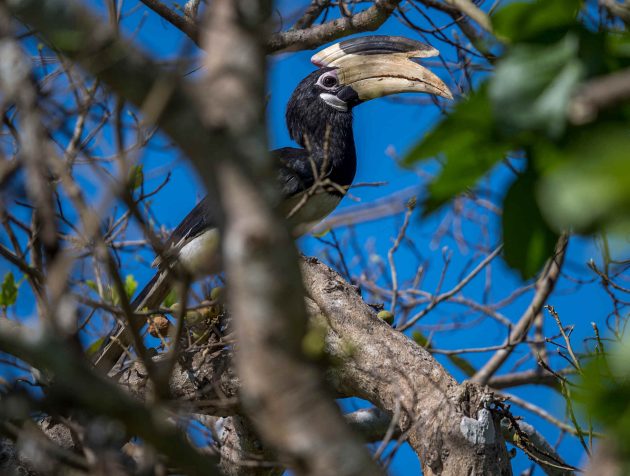
It mainly feeds on fruit, particularly figs – see here for an old-fashioned-looking report with specifics.
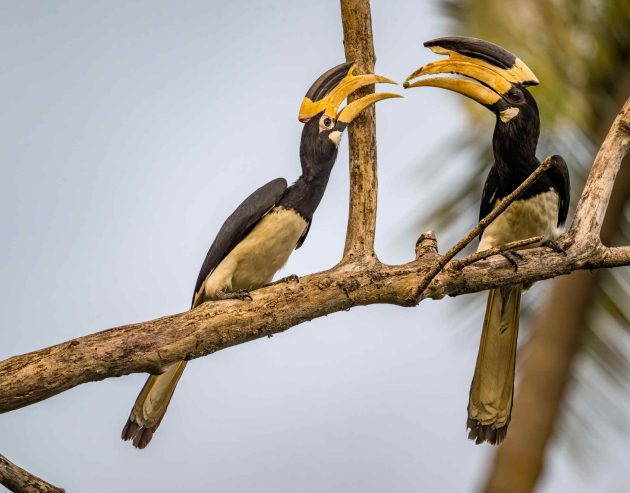
This makes them important parts of whole ecosystems – with their large bills and body size, hornbills such as the Malabar Pied Hornbill can consume and disperse large-sized seeds (source).

The male sometimes feeds the female even when said female is not enclosed in a treehole during breeding (see here for information on preferred nesting trees).

Distinguishing the two sexes is simple – the one in the KISS cover band is the female (white eye mask). The female is also smaller.
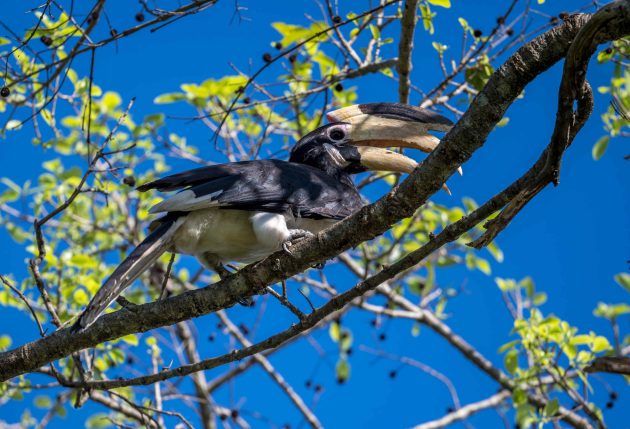
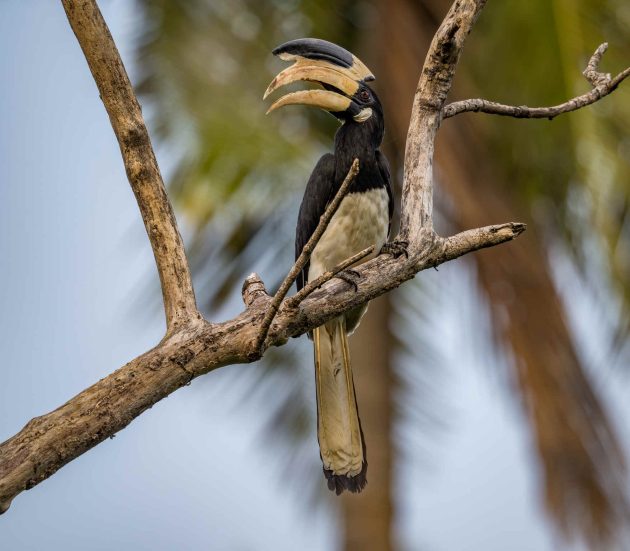
Perhaps the most intriguing, though somewhat sparse, paper on the Malabar Pied Hornbill is one on it pursuing social play (or “potential social play”, as the cautious researchers call it). They observed the following:
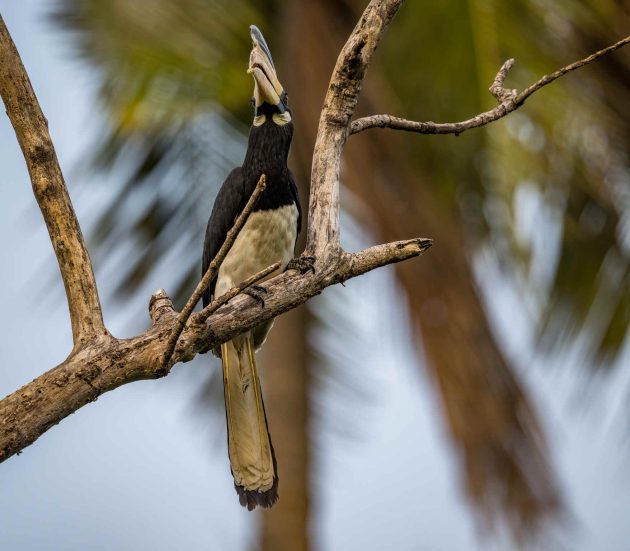
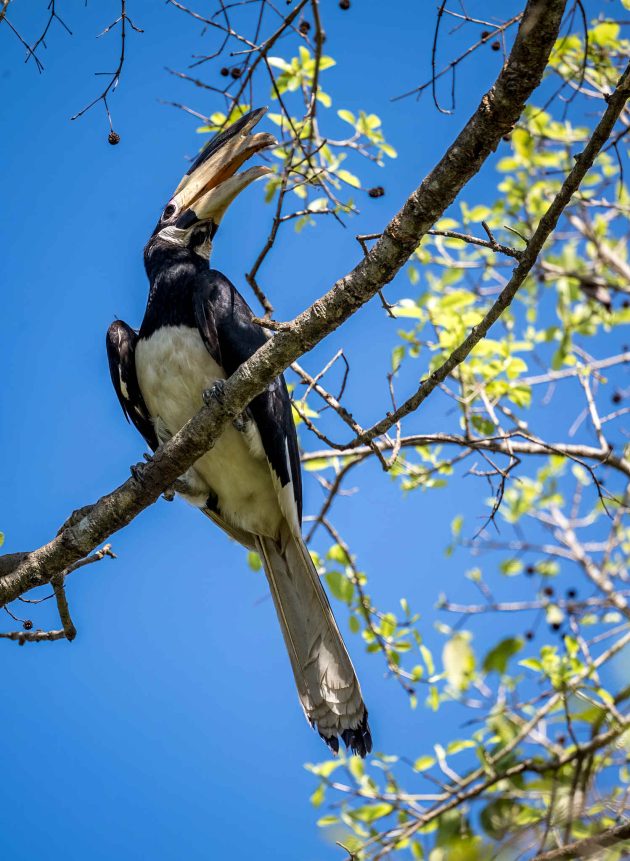
“Among the kinds of social play behaviour observed during this study, the most fascinating and interesting observation was a characteristic flight display along with the locking of bills. These hornbills were observed to fly out of the pre-roost tree, one after another, perform a mid-air acrobatic twirl and lock their bills together. This took place directly above the middle of the river and as the birds were free-falling in mid-air, they would suddenly break off and fly back to the pre-roost gathering tree or in two different directions.”
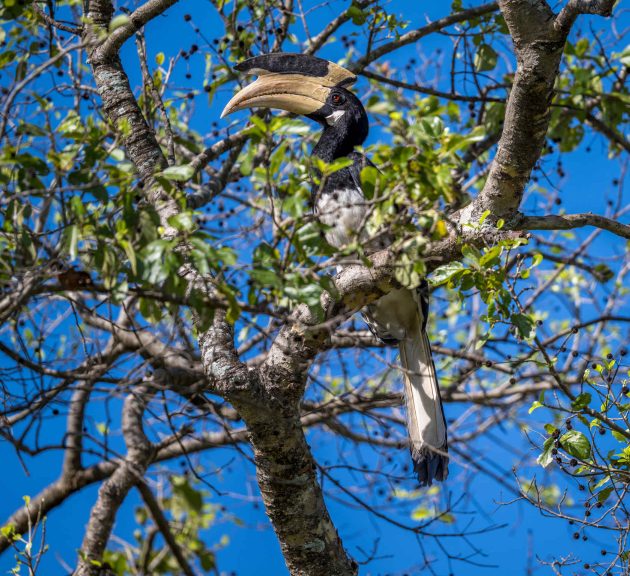



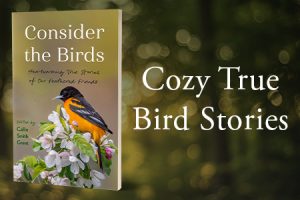




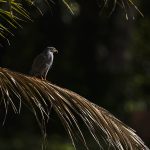
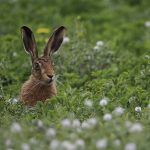
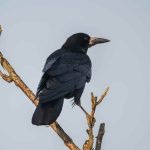
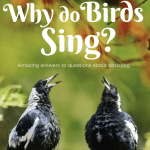

That’s a handsome bird! Probably should put Sri Lanka on my wishlist too.
Sri Lanka is on my wishlist for far too long!